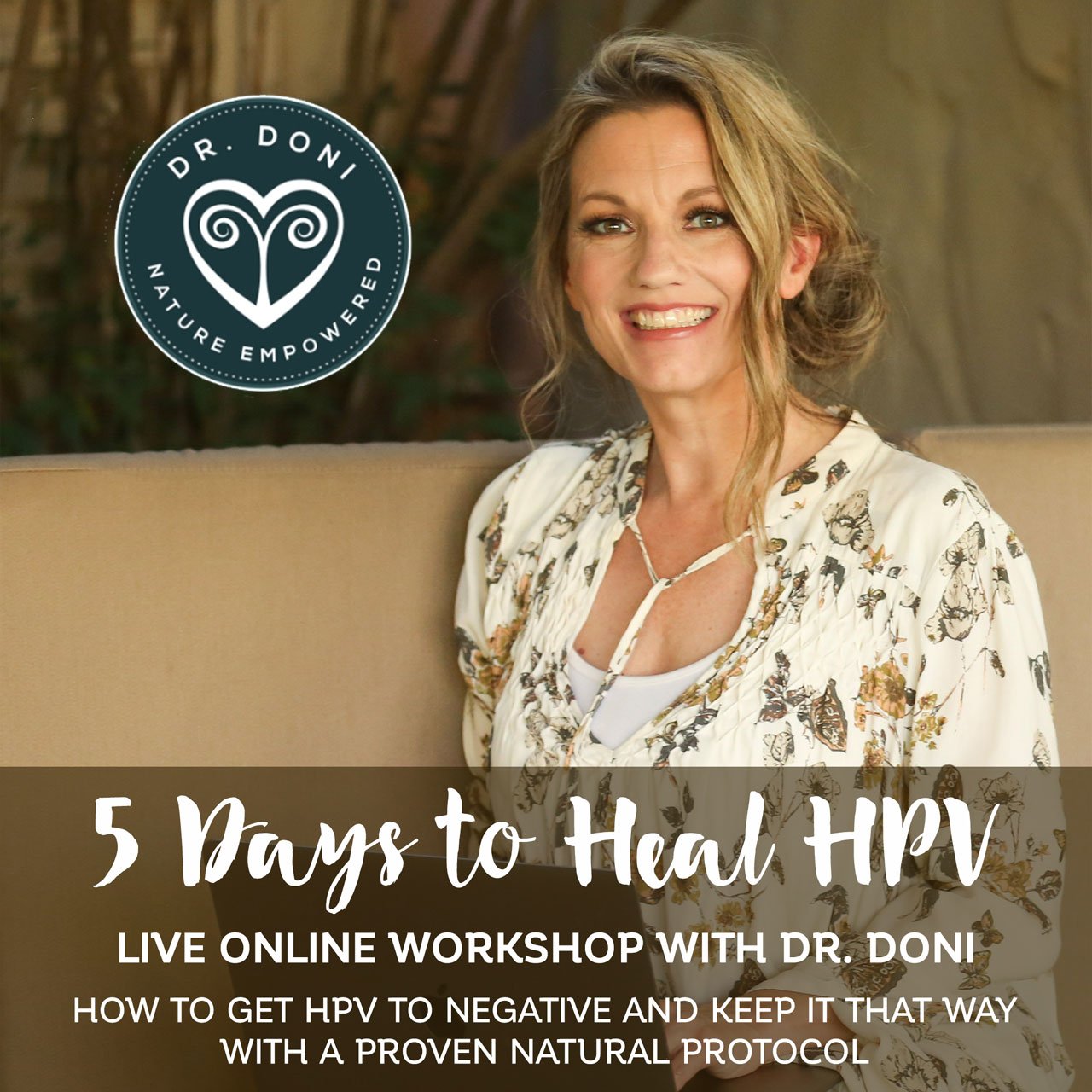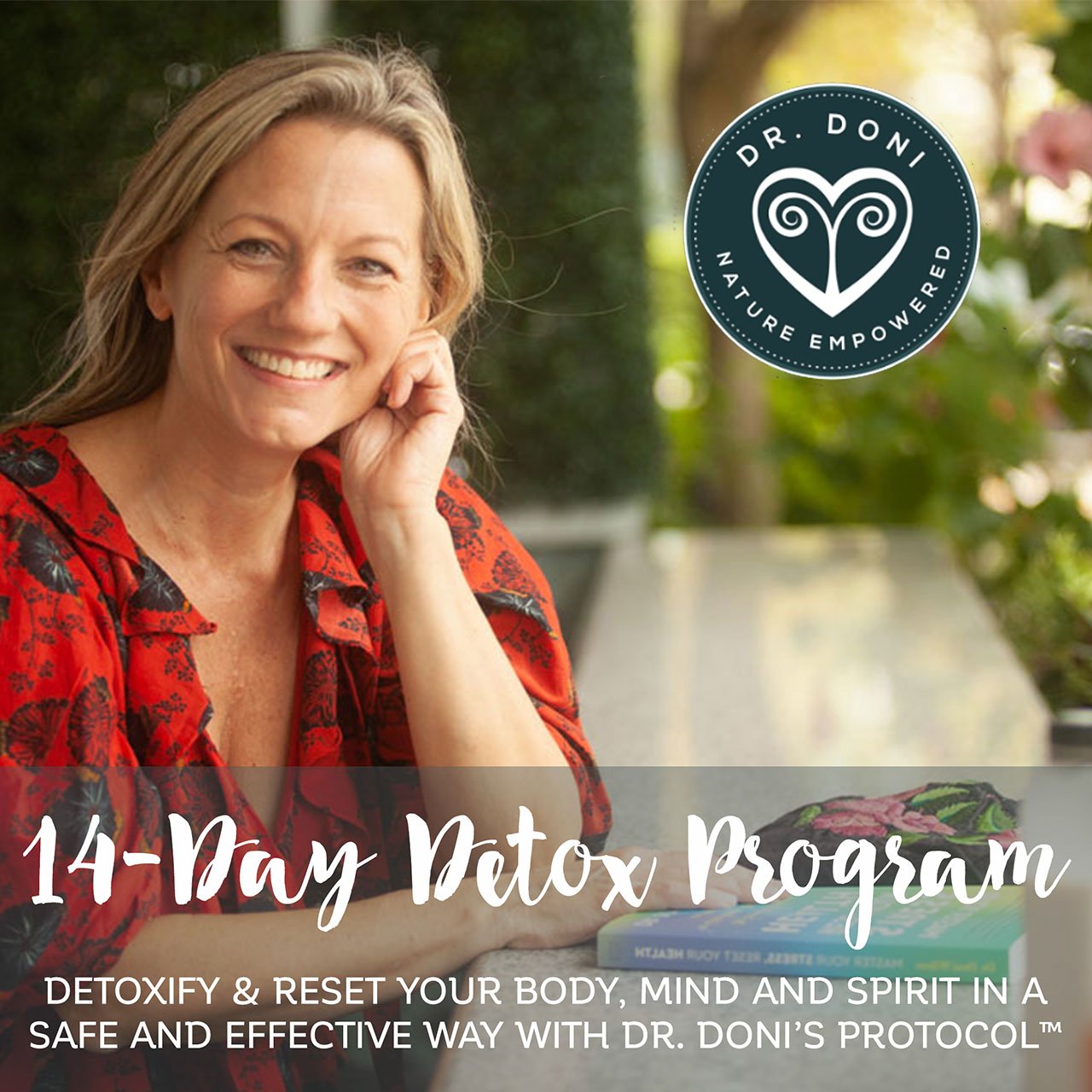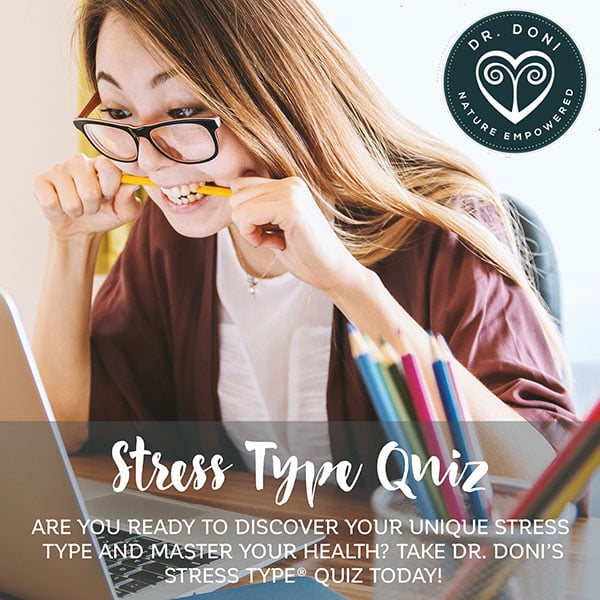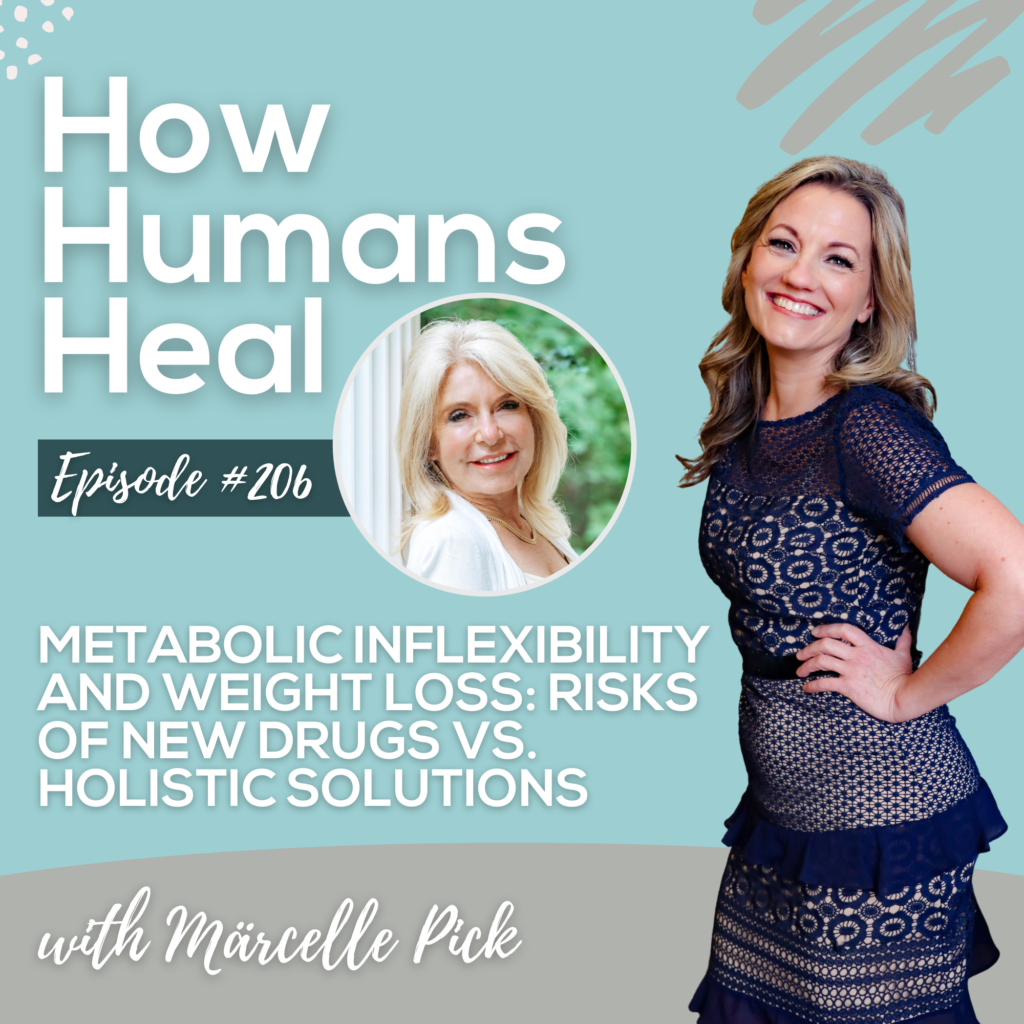
Emotional Healing: Breaking the Cycle of Stress and Trauma
- Home
- Stress & Adrenal Fatigue
- Emotional Healing: Breaking the Cycle of Stress and Trauma

Emotional healing is an antidote to the mechanisms of emotional stress and trauma in the body. Dr. Doni explains how self-acceptance and self-love can serve to lower oxidative stress levels and heal the stress patterns in your life.

We’ve all had those sleepless nights. But have you ever started to worry about not getting enough sleep while you were laying there not sleeping? Maybe you begin to visualize all kinds of groggy, sleep-deprived scenarios for when the sun comes up. Suddenly you are not sure if it is the worry about not sleeping or whatever it was that kept you awake in the first place that is keeping you up!
This happens to us all sometimes, and I bring it up because it is a simple example of how our thoughts and our emotions link with the physical mechanisms in our bodies. Just how much do our thoughts and feelings affect our physical health? As it turns out, quite a lot. In this article, I will break this connection down for you and also offer some tips and tools to get you going in the right direction. You can calm emotional stress, recover from trauma, maintain resilience, and experience emotional healing on all levels!
How “Negative” Emotions or Conditioned Responses Can Affect Physical Health
A lot of us “beat ourselves up” emotionally and mentally when our bodies are not looking or behaving in the ways that we want them to or think they should. We may see images of the “perfect body” or even a “perfect life” on TV, in magazines, and in advertisements and wonder why “we can’t have what they have” or why our lives and our bodies are “less than par.”
You know the cycle and so do I! We’ve all been there. Unfortunately, more people are in this cycle than ever nowadays. (1)
Even making comparisons to friends and family members in our lives that seem to “have it all together” can inevitably lead to real feelings of frustration within us. We feel out of control and then attempt to control our bodies in harmful ways or control others and our outside environment. We eventually slide into deeper feelings of fear, guilt, shame, and resentment. The pattern pulls us farther and farther away from our true selves and the ability to be loving and supportive towards ourselves.
Sometimes it is hard to get out of the cycle of comparison, control, and negative (or what I prefer to describe as “conditioned”) feeling states. Being judgmental about our thoughts perpetuates the pattern. But did you know that ending this pattern can actually lead to physical healing?
I know how alone and afraid a person can feel when faced with chronic health issues. The fact is that whether you just want a good night’s sleep, to heal destructive eating habits, or heal a chronic condition like an autoimmune disease, fertility struggles, or HPV and abnormal pap smears, the more that frustration grows inside of you, the more symptoms will expand and get worse!
The reason can be seen in what the body does on a biochemical level when confronted with emotional stress. Emotional stress can be brought on by a variety of different situations, including abuse (sexual, emotional/psychological, or physical), being exposed to violence (caused by everything from watching violent TV shows or being in a natural disaster to abandonment, neglect (especially in childhood), and a host of other situations. (2)
Emotional Stress Can Grow into Trauma
For most, emotional stress is not caused by a particular crisis, however. It is caused instead by our perceptions of things that happen in our everyday lives – arguments with our spouse, deadlines at work, financial challenges, and, of course, health diagnoses. In the midst of our emotional turmoil about our lives, our bodies jump to action, turning on stress responses that can have consequences down the road.
For many, stressful events or ongoing emotional stress can also turn into deep-rooted trauma. How this happens is different from one person to another. For some, even that doctor’s visit where you first learned about a medical diagnosis can cause some amount of trauma that can display as active PTSD symptoms even years later. (3) When another stress comes along, it can “re-trigger” the prior experience, and a “conditioned” state or feeling, such as guilt, fear, and/or shame. Unknowingly, we end up choosing activities and relationships that perpetuate the stress. Some ways that trauma can continue to carry forward throughout our lives include:
- being “hard on ourselves” or what we often call “negative self-talk”
- ongoing addictive habits
- emotional eating
- staying in abusive relationships
- isolating oneself, being shut down to love and a true connection with others
- difficulty in relationships
- feelings of shame for “no reason”
- keeping family secrets
- feelings of ongoing physical exhaustion or fatigue
- constant anxiety or cycles of depression
- development of physical diseases such as autoimmunity or cancer
At the same time, other people emerge seemingly unscathed from the most intense crisis. For those who triumph after a crisis, abuse, and trauma, the majority have done so because they have embraced the emotional healing process after trauma and have emerged more inspired and grateful for their life than ever before. I will discuss some tools to help heal from trauma and emotional stress and emerge triumphant and healthy in the next section.
The Mechanisms of Stress and Trauma in the Body
The fact is that all of us experience emotional stress at least at some point throughout our day-to-day lives. The consequences of this stress on our body can be as diverse as the person experiencing it. In all cases, however, emotional stress causes direct effects on the body in some way. Cortisol levels become skewed (either too high or too low) and immunity is decreased. In addition, our hormones and digestion inevitably become imbalanced by stress responses gone out of control.
This whole process can lead to adrenal dysfunction and burnout and can have a direct effect on our susceptibility to a variety of disease conditions, such as HPV and other viruses, fertility issues, PMS symptoms, endometriosis, autoimmunity, metabolic imbalances, migraines, heart disease, dementia, and much more.
Basically, our bodies know what we are thinking and they tend to respond accordingly! When we think critical thoughts of ourselves – such as “I’m so stupid” or “what is wrong with me” – or when we experience conditioned emotional states on the regular, our bodies will respond to that communication with stress responses in lieu of the necessary communication needed for healthy regulation of the reproductive system, digestion, immune system function and more. We get stuck in a stress pattern perpetuated by the thoughts we are “taught” to have about ourselves.
And once all that stress affects the body in some way and we find out about it (usually through a diagnosis or an unpleasant symptom like weight gain), we begin to feel alone and separate from others.
Ultimately, we feel “separate” from ourselves and our bodies – which causes us to focus externally on what we can say or do to regain control. But that doesn’t solve it either because if we are not connecting with ourselves, we are not able to truly (and intimately) connect with others. This is an understandable protective mechanism, but it has consequences all its own as well.
The social isolation we feel as a result of our perceptions about our body and health condition can be particularly damaging. According to a study conducted in conjunction with VA hospitals, humans need 5 different kinds of connectedness in order to thrive. (4) Not just one, but five! When we don’t have all five, this can significantly affect our physical health.
Isolation is also directly connected to major depression and indirectly connected to metabolic imbalance, digestive issues, heart health, and lower immune function. (5) A comprehensive study conducted by researchers at Harvard University in the field of psychoimmunology found that conditioned emotional states, especially anxiety, can have direct consequences for cardiac health. (6)
Social Ties Can Help
On the other hand, investigations have also found that social connectedness and support are directly related to longevity. The Human Population Laboratory’s 50-year study on the residents of Alameda County, California was probably the largest to make this link. (7)
They remarkably found that, regardless of sex, age, pre-existing conditions, smoking status, alcohol consumption, race, physical activity, and weight, people in the community who had “fewer social ties” had a three-fold higher risk of morbidity than those with the most social ties. The highest number of social ties were also correlated with the lowest rates of disease of any kind.
The study researchers concluded that “a supportive, tight-knit community was more of a predictor of heart health than cholesterol levels and tobacco use.” Wow!
The Importance of Self-Acceptance and Self-Love in Emotional Healing
The evidence is in. When we stop the stress pattern, and shift from conditioned thoughts and emotions (anxiety, fear, guilt, etc.) to learning how to be authentically ourselves – feeling love and gratitude toward ourselves and others (and connecting with others through that authenticity) – our whole being starts to thrive, including our bodies!
Can you really do this when it feels as if you are in the quagmire of self-condemnation and comparison? You bet, and you can do it one step at a time!
The first step in any journey can often be the most important one. For most people on the journey towards physical and emotional healing, self-acceptance is that first step.
Self-acceptance is the ability to accept yourself just the way you are, faults and all. Think for a moment: who would you be if you simply accepted and loved yourself through and through, in the way that you may love your own child, a pet, or a cherished loved one? How would you feel on the inside? And how would you be connected to the world around you?
The ability to feel that feeling of self-acceptance and self-love all of the time (or even most of the time) does not come overnight for most people, of course. The ability to cultivate it happens over time. It is akin to a muscle that gets stronger the more you “work it out.”
Self-love means truly honoring yourself, including all parts of your body, and knowing that “you are worth it.” Self-care is intricately a part of the emotional healing process and is the fuel for self-love and self-worth.
Is Self-Love Selfish?
Sometimes people fear that they will be “self-centered” if they focused on self-love and self-care, as if that is a bad thing. The amazing thing is that the more you love, accept, and take care of yourself (through self-nurturing habits, healthy eating habits, taking time for slowing down and doing things you enjoy, doing healing work, and simply pampering yourself a little every day), the more you are able to pass that love, joy, acceptance, and “you are worth it!” attitude on to others in more meaningful ways than ever before.
What’s more, from the place of self-acceptance and self-love, you can begin to see any imbalance, pain, or disease as simply a “wake up call” that your body is giving you as it asks you for help to restore balance again.
Part of the journey of self-love is understanding why stress, and corresponding disease symptoms, is happening in your own life. And a big part of this understanding is being able to witness and heal the stress patterns in your life.
Self-Acceptance Leads to Less Oxidative Stress
Self-acceptance and self-love can even lead to less oxidative stress. The link between high psychological stress and cellular aging related to oxidated stress has been well documented. (8) The fact is that the reverse of this is true as well. When you begin to accept yourself as you are, inflammation, anxiety, insomnia, and even pain levels all lower as well.
I personally found profound relief from chronic migraines once I began to put into practice tools that encourage self-acceptance and self-love. Don’t believe me? Why not do your own experiment. Spend 24 hours thinking nothing but good thoughts about yourself and see how you feel by the end of the day. Now try it for a week and record your findings in a journal. I bet you will find that you feel much better physically as well as emotionally by the end of your experiment!
How to Begin to Cultivate Love and Acceptance for Yourself
You can begin to cultivate love and acceptance for yourself by becoming more aware of each moment. And you can do that by simply diving into the learning process and then putting it into practice. Here are 4 ways you can begin the journey:
#1 Mindfulness, Meditation and Simply Slowing Down
Thousands of studies have shown the power of mindfulness and meditation for turning on emotional healing responses in both the brain and the body. Now new science is bridging the gap in our understanding by learning how the heart and “Heart Rate Variability” play a part in this process as well. (9)
There are a few simple tools that can help you begin to slow down, take a breath, and enter into the “calm in the middle of the storm” where all healing comes from. Some of them include:
- Breathwork
- Guided Imagery
- Mindfulness and Meditation
- Biofeedback
You can also use videos, apps, and devices to help you practice and monitor how your body responds. Some of my favorites are:
- HeartMath Inner Balance HRV Trainer
- Meditation Studio
- Calm- Meditation and Sleep Stories
- Headspace
- Recolor – Coloring Books for Adults
- Breathe to Relax by National Center for Telehealth & Technology
- Breathe Well – for iPhone and for Android
#2 Spiritual and Emotional Healing
When we stand back from our lives and stressful experiences, we realize that we are beings existing in human bodies, after all. Gaining a greater perspective on ourselves in relation to the world we live in and the connectedness we have to each other can be amazingly healing. This shift can come in many different ways that can guide you to access what is referred to as the “unified field.” This can lead you to a greater understanding of yourself.
These days, there are oodles of gurus, spiritual leaders, retreats, conferences, and whole programs that promise to help you calm stress, heal trauma, and even connect with a Divine source for ongoing inspiration and renewal. It is really up to you to assess any program or course of emotional healing and/or spiritual study you are interested in for healing, then go within and determine what feels right for you. No matter what other people tell you is “latest and greatest” in the world of healing trauma, you must ultimately connect with your own internal guidance for that “yes” or “no.”
Here are some suggestions:
- Post-Betrayal Institute with Dr. Debi Silber. Learn from Dr. Debi about her research into recovery from trauma, and betrayal in particular. She created an online program with coaches to guide you through her process.
- What is Shamanism and How It Heals with Don Gino: Listen to my podcast interview with Don Gino, a.k.a. “Chaka-Runa.” Gino began his path as a shaman and healer using plant medicine at age 15.
- Dr. Joe Dispenza: Utilizing meditation, Dr. Dispenza guides you to connect with yourself and to shift your experience from survival mode to creating the life you desire.
- Daily Om: Built loosely around concepts of mindfulness, meditation, and healing in the eastern tradition, Daily Om dishes out tips, class offerings, and inspirations along these lines daily to your email inbox and on their website.
#3 Get Inspired and Learn More About Emotional Healing
Whether it’s through a good read, a YouTube video, going to a conference, or simply hearing an uplifting story from a friend, we humans really do get inspired by input from others that we can relate to. Encouraging words give us positive examples that we can lean on during the tough times and every day. And understanding how to heal helps provide reference points and hope.
Here are just a few books that have inspired me along the way:
- The Body Keeps the Score: Brain, Mind, and Body in the Healing of Trauma by Bessel Van Der Kolk – This is a great book that helps you to unpack and understand the intimate connection between the mind and the body and how we as individuals as well as a society both hold on to as well as process traumatic stress.
- Waking the Tiger: Healing Trauma by Peter A. Levine- Peter Levine is a true pioneer in the field of healing trauma. In this book, he uses examples in nature to create a normalized system in which to address trauma in individuals. Waking the Tiger is his seminal book and a great introduction to Somatic Experiencing Therapy. (10)
- The Sexual Healing Journey by Wendy Maltz- According to the National Center for the Victims of Crime, roughly one in 5 girls and 1 in 20 boys are victims of child sexual abuse in some way. (11) Those are just the reported statistics and do not include abuse that may happen later in life or the unreported. Still, the trauma that ensues because of sexual abuse is not a topic that most are willing to talk about in our society at large. Maltz’s brave book helps survivors know that they are not alone. She also helps them understand and accept what happens later in life because of sexual abuse and helps them move gently towards emotional healing.
- The Power of Vulnerability and Listening to Shame by Brene’ Brown (Ted Talks on YouTube) – Brene Brown calls herself a “researcher/storyteller” in these classic talks from almost a decade ago. However, she is much more than that! Brene’s amazing gift for unpacking feelings of shame and vulnerability about the experiences that happen in our lives (and then in connecting us to our authentic feelings about them) allows us to be okay and even celebrate our vulnerability as we proceed along the path of emotional healing and embracing every part of ourselves. You can find out more about what Brene’ is doing nowadays HERE.
#4 Connect with Others and Get Support
True healing on all levels is about helping our nervous system to calm down and feel safe again. I have found after 21 years of practice that healing from any disease or imbalance simply must include stress recovery and addressing trauma as part of it. Once we feel safe, secure, and loved emotionally, our physical body begins to heal and we can move on to live a life of meaning and purpose.
When we let go of conditioned thought and emotional patterns, we begin to resolve traumas and we also develop new beliefs that show us that we can not only survive but truly thrive. I have integrated techniques I’ve been trained in into my one-on-one work with patients, as well as into the group programs I develop. This way I can help you directly with stress recovery on all levels.
Using my Stress Recovery Protocol™, I guide you to address anxiety, fatigue, hormonal imbalances, disease conditions, and other physical manifestations of chronic stress. You can find out more information about that HERE.
 Because emotional healing is integral to healing from HPV, it’s included in my Say Goodbye to HPV online program. Watch my FREE masterclass on HPV to find out more about my approach and the 12 week program: HPV Positive: The Answers You Need.
Because emotional healing is integral to healing from HPV, it’s included in my Say Goodbye to HPV online program. Watch my FREE masterclass on HPV to find out more about my approach and the 12 week program: HPV Positive: The Answers You Need.
Wellness wishes to you, always!
–Dr. Doni
27th July 2021
P. S. Join the HPV Healing Resource (Private Facebook Group)
This group is to support you on your path of healing and creating a life without HPV. It is led by Dr. Doni Wilson N.D., who has been helping women with HPV and abnormal pap results for over 22 years. It is a private group, only members can see who’s in the group and what they post. Click here to join.
References:
- (1) Baby Boomers: The Gloomiest Generation https://www.pewresearch.org/social-trends/2008/06/25/baby-boomers-the-gloomiest-generation/
- (2) Watching violent news on social media can cause stress https://www.news18.com/news/tech/watching-violent-news-on-social-media-can-cause-stress-988253.html
- (3) Cancer-Related Post-traumatic Stress (PDQ®)–Patient Version https://www.cancer.gov/about-cancer/coping/survivorship/new-normal/ptsd-pdq
- (4) Loneliness is closely associated with depression outcomes and suicidal ideation among military veterans in primary care https://www.sciencedirect.com/science/article/abs/pii/S0165032717320670
- (5) The Link Between Depression and Physical Symptoms https://www.ncbi.nlm.nih.gov/pmc/articles/PMC486942/
- (6) Going to the heart of the matter: do negative emotions cause coronary heart disease? https://www.sciencedirect.com/science/article/abs/pii/S0022399999000914
- (7) The Alameda County Study: A Systematic, Chronological Review https://files.eric.ed.gov/fulltext/EJ792845.pdf
- (8) Good Stress, Bad Stress, and Oxidative Stress: Insights from Anticipatory Cortisol Reactivity https://www.ncbi.nlm.nih.gov/pmc/articles/PMC4028159/
- (9) Article Explains Importance of Heart Rate Variability for Your Health https://www.heartmath.org/articles-of-the-heart/science-of-the-heart/article-explains-importance-of-heart-rate-variability-for-your-health/
- (10) Somatic Experiencing International https://traumahealing.org/
- (11) Child Sexual Abuse Statistics https://victimsofcrime.org/child-sexual-abuse-statistics/
Share this Post:
Dr. Doni Wilson's Team
14 Day Detox Program
Take the Stress Type Quiz
Dr. Doni Social Media
Popular Posts

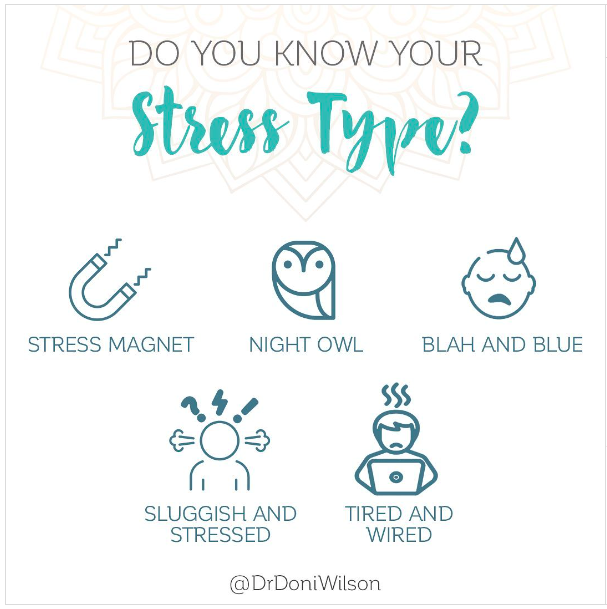
The 5 Burnout Types
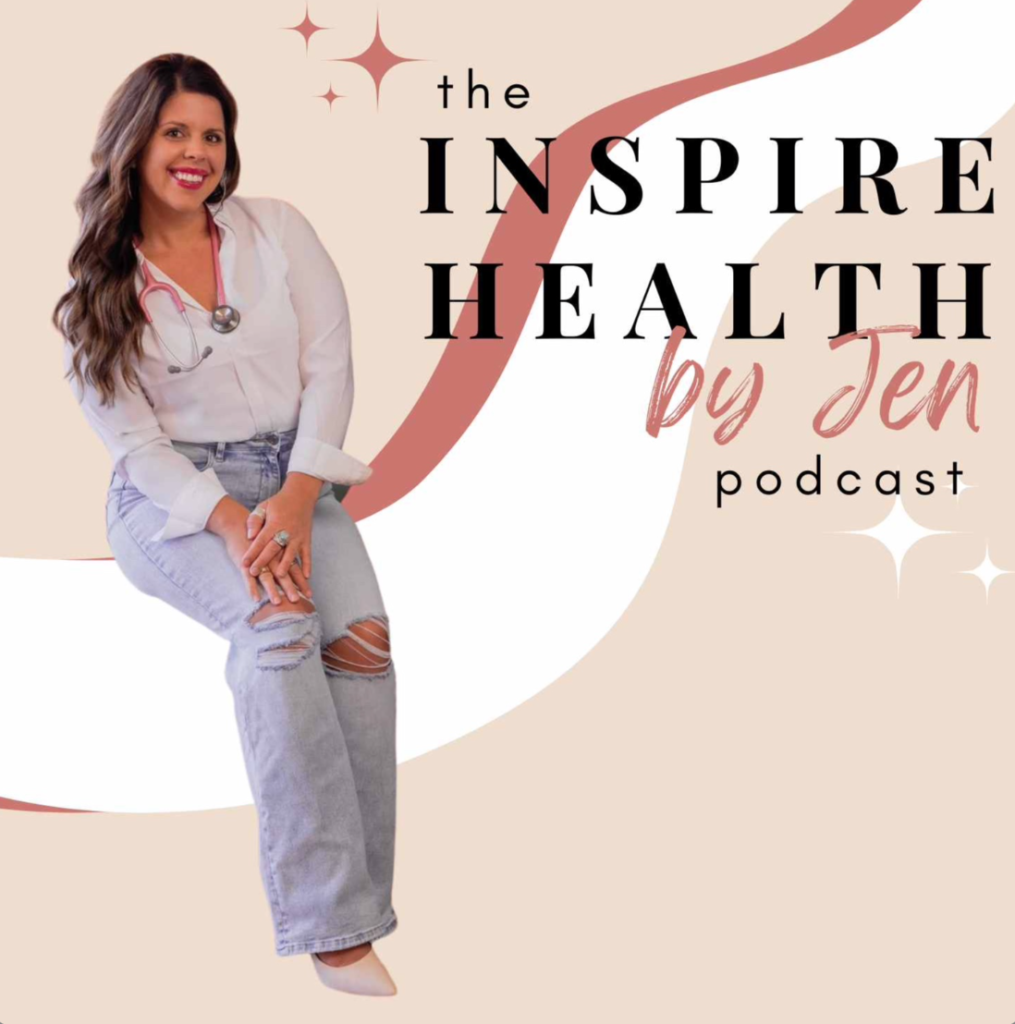
Healing HPV Holistically: Dr. Doni on the Inspire Health by Jen Podcast
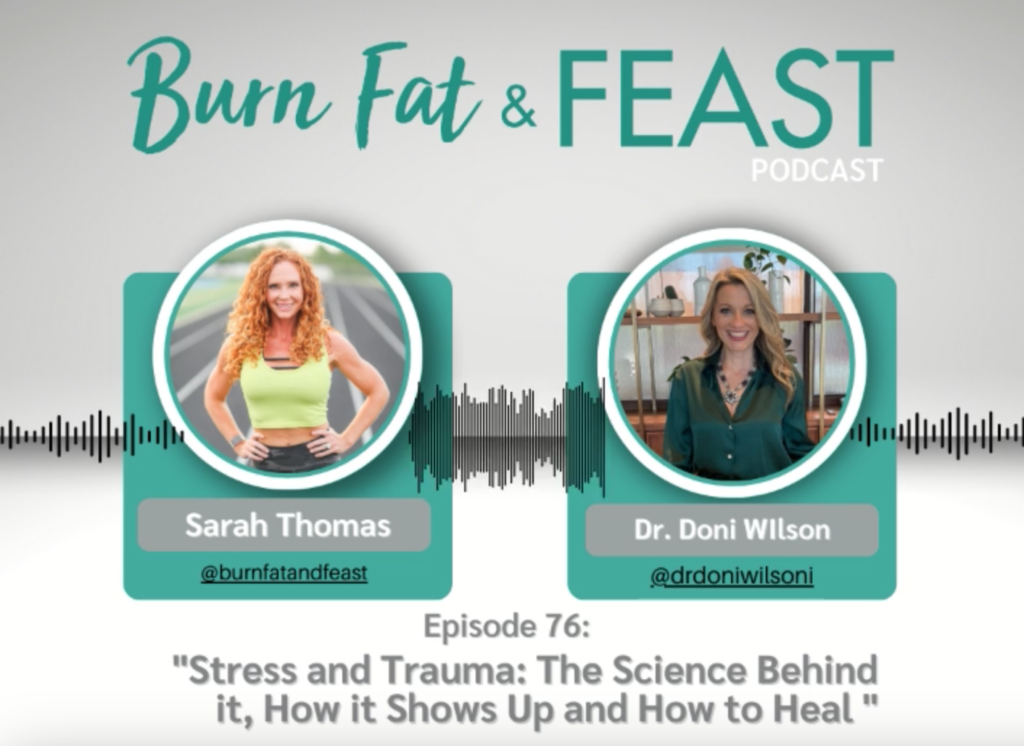
Recent Podcasts
Signup to receive our weekly newsletter with all the latest news, podcasts and special offers
New Book - Order Today!

SIMPLE PRACTICES for SHIFTING FROM YOUR STATE of STRESS to YOUR FLOW and FREEDOM
MASTER YOUR STRESS
RESET YOUR HEALTH
Order Now! Related Posts

What is making you susceptible to HPV?
I have been working with women who had abnormal cells on their cervix and/or vaginally, caused by HPV for over 20 years now. And while

The 5 Burnout Types
Did you know there are 5 burnout types? They are based on your Stress Type®, which is how your adrenal function has been affected by
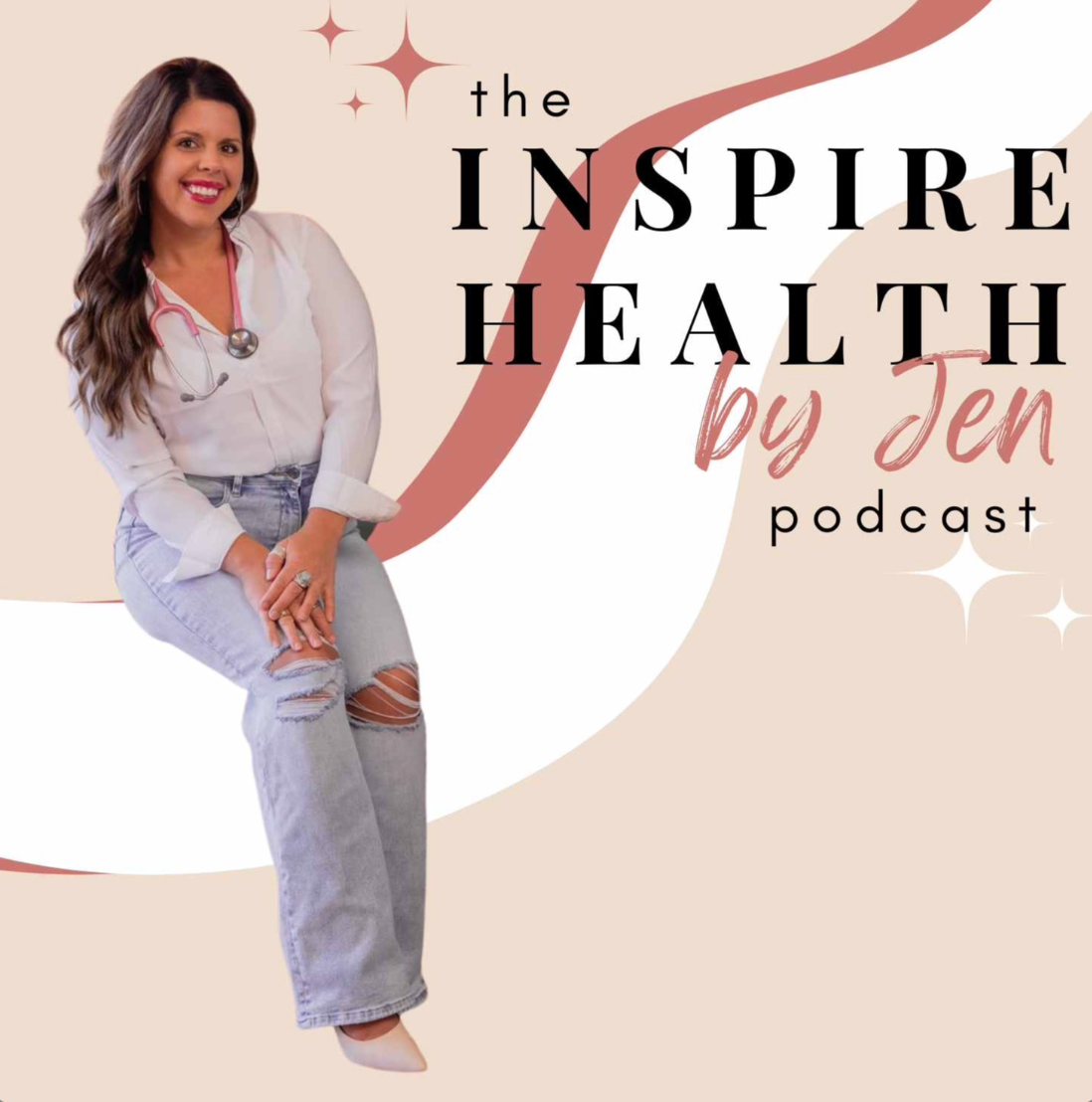
Healing HPV Holistically: Dr. Doni on the Inspire Health by Jen Podcast
Dr. Doni was interviewed by Jen Ciszewski on the Inspire Health by Jen Podcast, talking about how to heal away HPV from your body for good.
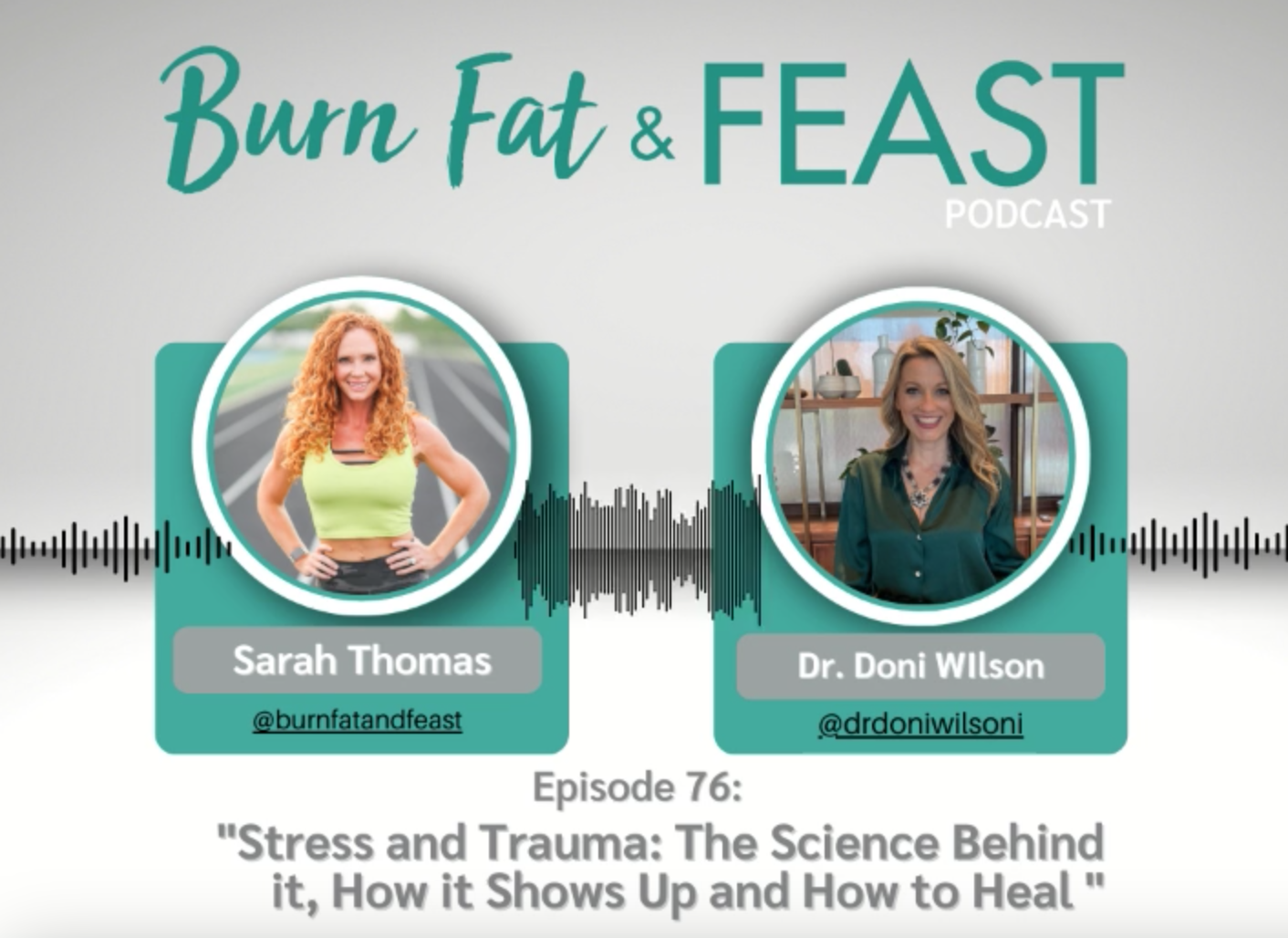
Stress and Trauma: The Science Behind It, How It Shows Up and How to Heal: Dr. Doni on The Burn Fat and FEAST Podcast
Dr. Doni was interviewed by Sarah B. Thomas on the Burn Fat and FEAST Podcast, talking about the impact of stress and trauma on our health and what to do to recover from them.


